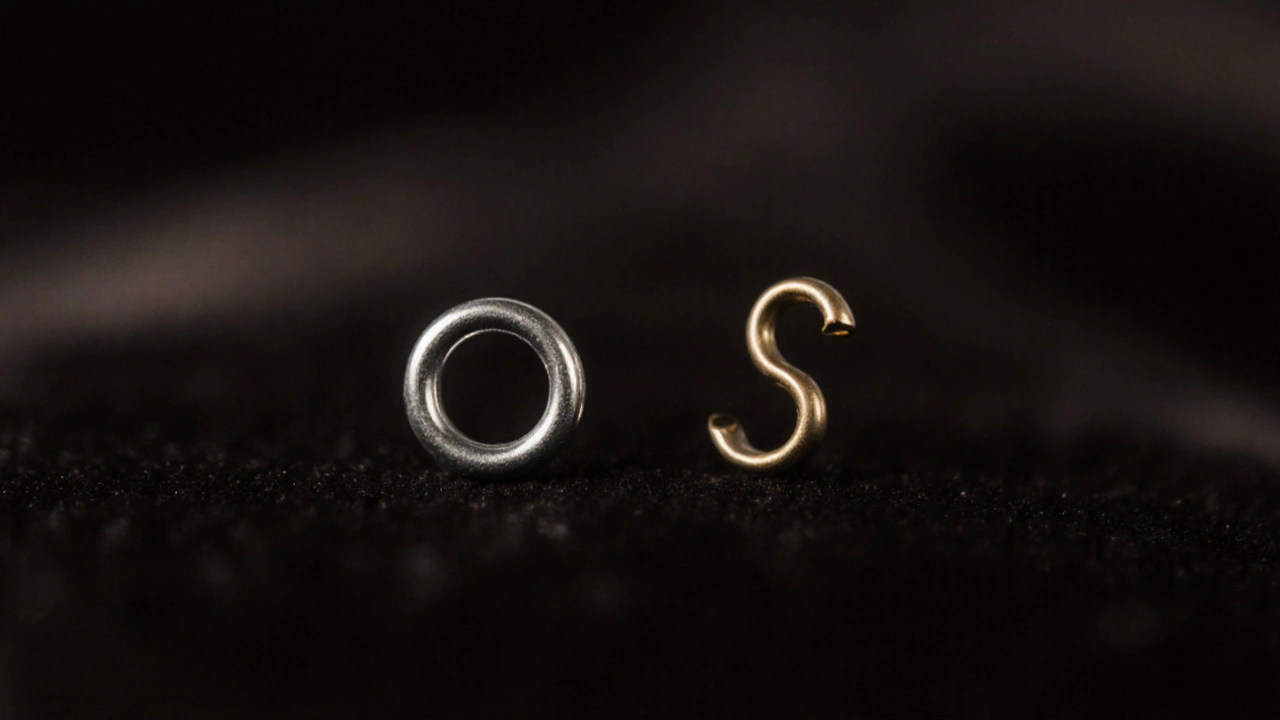Jump Ring vs Split Ring – What’s the Real Difference?
When working with Jump Ring vs Split Ring, you’re comparing two tiny metal loops that keep jewellery pieces together. Also known as jump‑ring and split‑ring comparison, it helps crafters choose the right closure for necklaces, bracelets, and earrings.
A jump ring is a solid, closed circle of wire with a tiny opening that you open with pliers works like a miniature clasp. It’s perfect for attaching charms, linking chains, or serving as a pivot point in dangling earrings. Because the metal stays continuous, the ring stays strong even under repeated stress.
In contrast, a split ring has a tiny gap that creates a spring‑like action when you snap it closed. The split lets the ring open slightly without tools, then snap back into place, much like a tiny snap button. This makes it great for pieces that need quick fastening, such as bracelet charms or detachable pendants.
Key Factors to Compare
First, look at material. Both rings come in sterling silver, gold‑filled, and copper, but the thickness varies. Jump rings are usually thicker, offering more durability for heavy beads or large pendants. Split rings are thinner, which keeps them lightweight but can limit how much weight they hold before the spring loses its grip.
Second, consider the opening size. Jump rings have a fixed opening that you must widen with flat‑nose pliers. The larger the gap you make, the easier it is to thread components, but you also risk weakening the ring if you over‑stretch. Split rings, on the other hand, open automatically when you pull the ends apart, so you never need a tool to start the closure.
Third, think about reusability. Jump rings can be opened and closed many times if you’re gentle, but each cycle slightly reduces the metal’s strength. Split rings are designed for repeated snapping, so they tend to retain their grip longer, especially when made from spring‑grade wire.
Fourth, evaluate aesthetics. Jump rings sit neatly against the metal of the piece, giving a clean look. Split rings have a tiny visible gap that can add a subtle decorative detail, especially in vintage‑style jewellery.
Finally, factor in the project’s speed. If you’re assembling a batch of earrings and need to move fast, split rings let you snap closures without reaching for pliers. For intricate work where you need precise alignment—like threading a delicate chain through a clasp—a jump ring gives you that control.
Many jewellery makers wonder which tool makes handling these rings easier. The answer often lies with a jump ring opener a small lever‑type device that opens and closes rings without pinching your fingers. With a opener, you can quickly open a jump ring, thread your materials, and close it with a single motion. It also works on split rings, allowing you to widen the gap when you need extra clearance for thick beads.
When you combine the right ring with the right tool, the whole process feels smoother. For example, using a jump ring opener on a sturdy gold‑filled jump ring lets you attach a heavy gemstone pendant without worrying about the ring de‑forming. Meanwhile, the same opener can give you extra leverage on a stubborn split ring that’s stuck in its closed position.
Beyond tools, the environment matters. In a humid workshop, split rings made from copper can develop a slight patina that actually improves grip over time. Jump rings, especially those plated in rhodium, may need occasional polishing to keep their shine and prevent corrosion.
Choosing the right ring also affects the final look of the piece. A split ring’s tiny gap can catch light differently, creating a subtle sparkle that some designers use intentionally. Jump rings, being seamless, let the metal flow uninterrupted, which is ideal for minimalist designs.
If you’re new to jewellery making, start with a mixed pack of both rings. Experiment by swapping them on a simple chain to feel the difference in flexibility and strength. Notice how a split ring snaps back, while a jump ring stays rigid until you pry it open.
Remember safety, too. Small rings can slip through fingers if you’re not careful. Always work over a soft surface or use a jeweller’s mat, and keep a pair of tweezers handy to pick up stray rings.
By now you should see how jump ring vs split ring isn’t just a naming clash—it’s a decision that influences durability, speed, style, and even the tools you’ll reach for. The right choice makes your jewellery stronger, looks better, and speeds up production.
Below you’ll find articles that dive deeper into each aspect: from detailed material guides and tool reviews to real‑world case studies of artisans who favor one ring over the other. Explore the collection to sharpen your skills and pick the perfect hardware for your next creation.
Jump Ring vs Split Ring: Key Differences Explained
Clear guide on jump rings vs split rings, covering definitions, uses, material choices, opening tricks, and a handy FAQ for jewelry makers.





